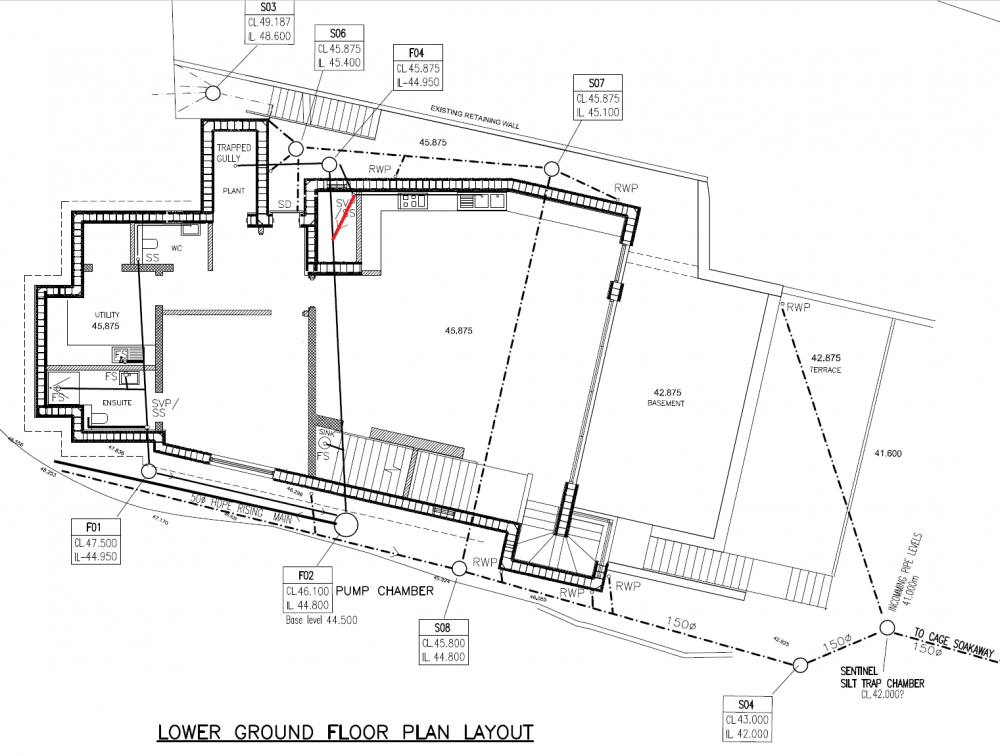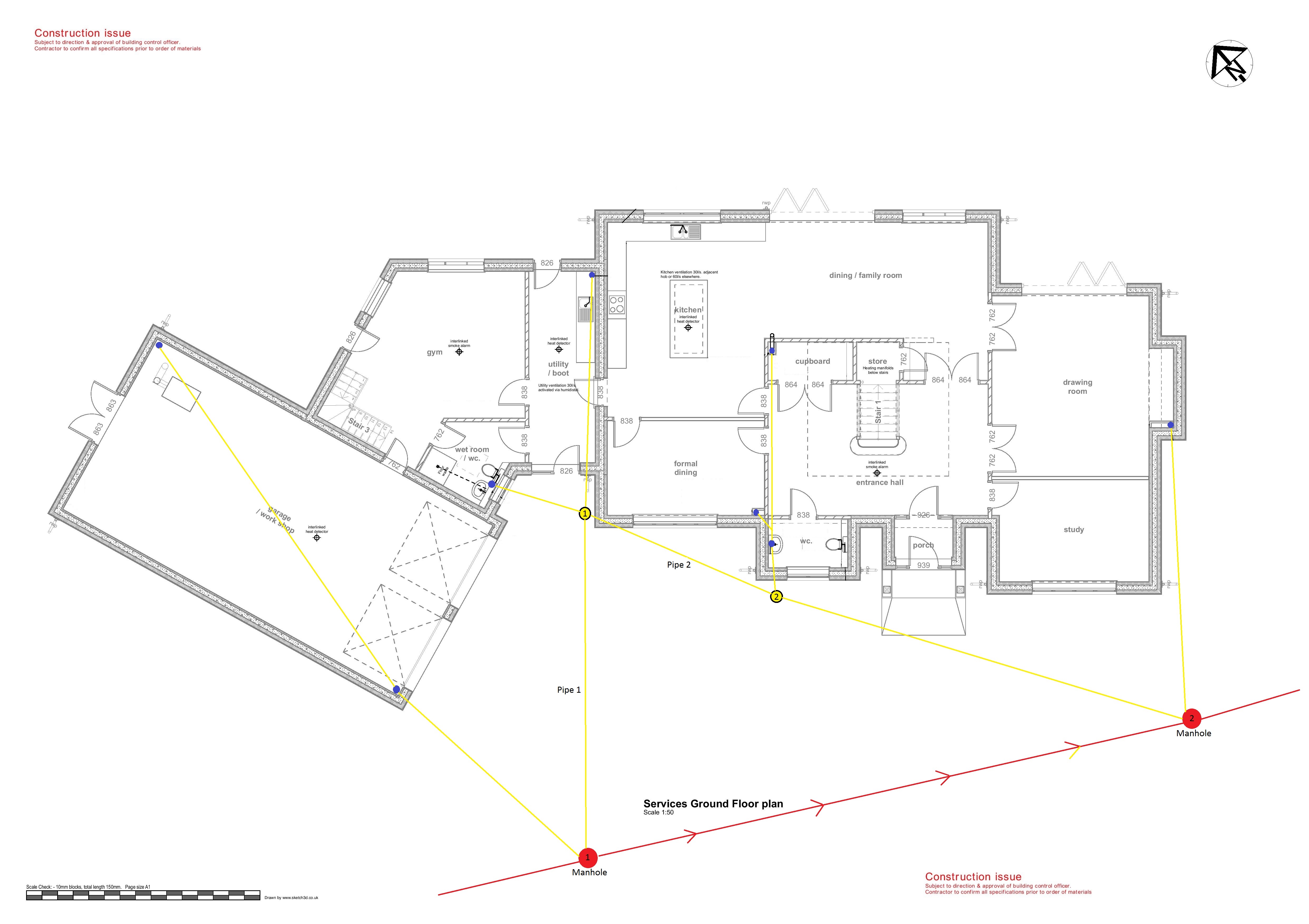Drainage guide
Table of Contents
Table of Contents
If you’re planning to build a new home, drainage is one of the most important elements to consider. Proper drainage ensures that excess water flows away from your home, preventing damage to your foundation and basement. But how exactly do you draw a drainage plan? In this article, we’ll cover everything you need to know about how to draw drainage plans.
Pain Points Related to Drawing Drainage Plans
Before we dive into how to draw drainage plans, let’s touch on some of the pain points associated with this task. For starters, many homeowners don’t have the knowledge or expertise to properly design a drainage plan. Without a clear understanding of how water moves around your home, it’s easy to create a plan that doesn’t work as intended. Additionally, drawing a drainage plan can be time-consuming and frustrating, especially if you’re not familiar with the process.
Answering the “How” of Drawing Drainage Plans
The first step in drawing a drainage plan is to conduct a site survey. This will give you an idea of the existing conditions of your property and the surrounding landscape. From there, you’ll need to identify potential problem areas, such as areas of standing water or low-lying sections of your yard. With this information in hand, you can start to design a drainage plan that includes features like French drains, swales, and downspout extensions. Be sure to consult with a professional if you’re unsure about any aspect of the design process.
Summary of Main Points
In summary, drawing a drainage plan is an essential part of building a new home. By addressing potential drainage issues early on, you can prevent costly damage down the line. When designing your plan, be sure to conduct a site survey, identify problem areas, and consult with a professional if needed.
How to Draw Drainage Plans: A Personal Experience
When my wife and I decided to build our dream home, we knew we needed to pay close attention to drainage. Our property had a few low-lying areas that were prone to flooding, and we didn’t want to risk damage to our foundation or basement. After conducting a thorough site survey, we worked with a professional landscape designer to create a comprehensive drainage plan. Our plan included several French drains, a swale to redirect water away from our home, and downspout extensions to direct rainwater into the surrounding landscape. The end result? A perfectly functioning drainage system that has kept our home safe and dry through countless rainstorms.
The Importance of Professional Help
While it’s certainly possible to design your own drainage plan, it’s always best to seek professional help if you’re unsure about any aspect of the process. A professional landscape designer or civil engineer can help you identify potential problem areas and design a comprehensive drainage plan that meets your specific needs. Additionally, they can help you navigate any zoning or building code requirements that may impact the design of your plan.
Understanding the Types of Drainage Systems
There are several types of drainage systems to consider when designing your drainage plan. Some of the most common include French drains, channel drains, surface drains, and downspout extensions. Each of these systems serves a different purpose, so it’s important to choose the right system for your specific needs. For example, French drains are ideal for directing water away from the foundation of your home, while channel drains can help you manage stormwater runoff on your driveway or patio.
Tips for Maintaining Your Drainage System
Once your drainage system is installed, it’s important to maintain it properly to ensure it continues to function as intended. Regular inspections can help you spot any potential issues before they become major problems. Additionally, you should make sure that all downspout extensions are properly directed away from your home, and that any debris or leaves are cleared from the system on a regular basis.
Question and Answer
Q: How much does it cost to draw a drainage plan?
A: The cost of drawing a drainage plan can vary widely depending on the complexity of the project and your location. As a general rule, you can expect to pay between $500 and $1,500 for a professional drainage plan.
Q: Can I install a drainage system myself?
A: While it’s possible to install a basic drainage system yourself, it’s always best to seek professional help if you’re unsure about any aspect of the process. A professional landscape designer or civil engineer can help you identify potential problem areas and design a comprehensive drainage plan that meets your specific needs.
Q: How often should I inspect my drainage system?
A: It’s a good idea to inspect your drainage system at least once a year, ideally in the fall before the rainy season begins. Additionally, you should inspect the system after any major storm event to make sure it’s functioning properly.
Q: How do I know if my drainage system isn’t working properly?
A: Signs of a malfunctioning drainage system can include standing water in your yard, damp or moldy spots in your basement, or cracks in your foundation. If you notice any of these signs, it’s important to have your drainage system inspected as soon as possible.
Conclusion of How to Draw Drainage Plans
Designing a comprehensive drainage plan is an essential part of building a new home. By paying close attention to potential drainage issues early on, you can prevent costly and damaging problems down the line. Whether you choose to design your plan yourself or seek professional help, be sure to conduct a thorough site survey, identify problem areas, and choose the right drainage system for your specific needs.
Gallery
Drainage Guide | Step 3 : Plan + Layout The French Drain.

Photo Credit by: bing.com / drainage drain french plan layout yard pipe drawing diagram system shown guide why read installation connectors connections perforated degree sure
Proposed Drainage Plan - Tidworth Architechtural, Structural And Civil

Photo Credit by: bing.com / proposed tidworth engineering
Thoughts On Drainage Plan - Waste & Sewerage - BuildHub.org.uk

Photo Credit by: bing.com / drainage buildhub svp sewerage
AFG Spring 2017 Update

Photo Credit by: bing.com / drainage plan drawing layout enlarge
Drainage Plan Thoughts - Waste & Sewerage - BuildHub.org.uk

Photo Credit by: bing.com / drainage plan pipe thoughts buildhub waste run sewerage





